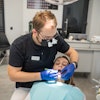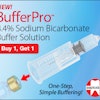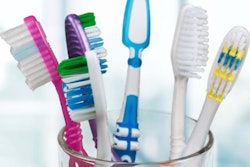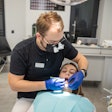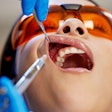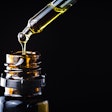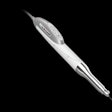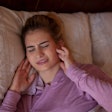
If you want patients to stop grinding their teeth, maybe you should email them. A new study found that patients who received regular email reminders significantly reduced their daytime nonfunctional tooth contact.
The researchers suggested email reminders can help patients to effectively manage temporomandibular disorders (TMDs). They published their findings on August 16 in the Journal of Oral Rehabilitation.
"Our email-based recording and reminding system not only enables periodical monitoring of [nonfunctional tooth contact] but also reminds patients to avoid the habit via frequent emails," wrote the authors, led by Tamiyo Takeuchi-Sato, DDS, PhD, assistant professor at the Showa University School of Dentistry in Tokyo.
Patients with TMD may engage in nonfunctional tooth contact behaviors, such as clenching or grinding, 3.5 times more often than their peers, the authors noted. Electromyography (EMG) activity systems to monitor and alert patients of these behaviors can be expensive so the researchers wondered whether emails could serve as an effective alternative.
The study included 30 patients with TMDs who had complained of acute pain in the previous three months. At the start of the program, the patients used an email-based system to record the frequency of their nonfunctional tooth contact behaviors for three days. They then performed one of three interventions for the next 20 days.
The first group received email reminders every half hour between 8 a.m. and 8 p.m. When the participants received an email, they selected whether they currently had no tooth contact, tooth contact related to oral activities, or nonfunctional tooth contact. The program also sent text messages reminding patients to keep their teeth apart.
The second group placed 10 sticky notes in areas where they were most likely to engage in nonfunctional tooth contact behaviors, such as on their television, bookshelves, and computers. The researchers instructed them to keep their teeth apart when they noticed nonfunctional contact.
The final group served as a control group. They were given verbal self-treatment instructions and counseling.
After 20 days, the signs of TMD improved for patients in all three groups. Patients significantly reduced the frequency of nonfunctional tooth contacts and improved the range of pain-free mouth opening. Patients in the email and sticky notes groups also had significantly lessened overall pain intensity.
While the TMD scores improved for the other two groups, the email-based reminder system still performed significantly better in almost all metrics. The researchers were not surprised by this finding.
"We found that all three strategies successfully decreased the frequency of [nonfunctional tooth contact] with the decrease being significantly greater in the [email] group than in the other two groups," the authors wrote. "This was not surprising because the email-based [nonfunctional tooth contact] recording and reminding system used in the [email] group allowed patients to consistently identify, monitor, and avoid [nonfunctional tooth contact]."
The researchers noted the email system cannot track the duration and intensity of parafunctional activity. Nevertheless, they hope it's a practical tool for use in clinical practice.
"It should be noted that this system can be easily applied in clinical settings because the majority of present-day patients own a smartphone/feature phone," they wrote. "Although we selected a 20-day intervention period, the optimal duration for the intervention and persistence of its effects need to be systematically evaluated in future studies."
